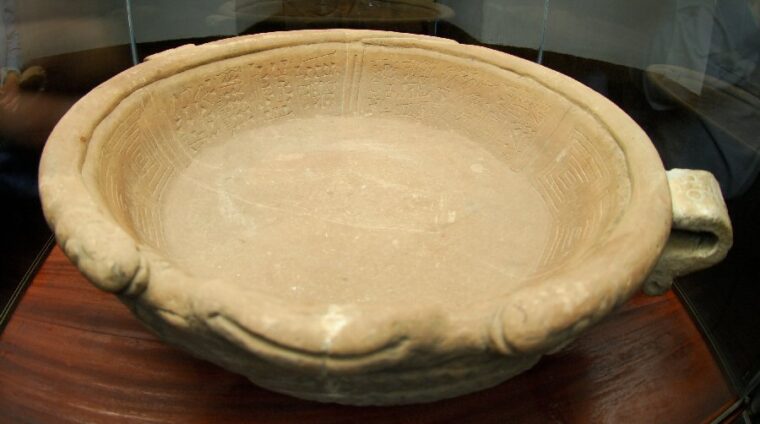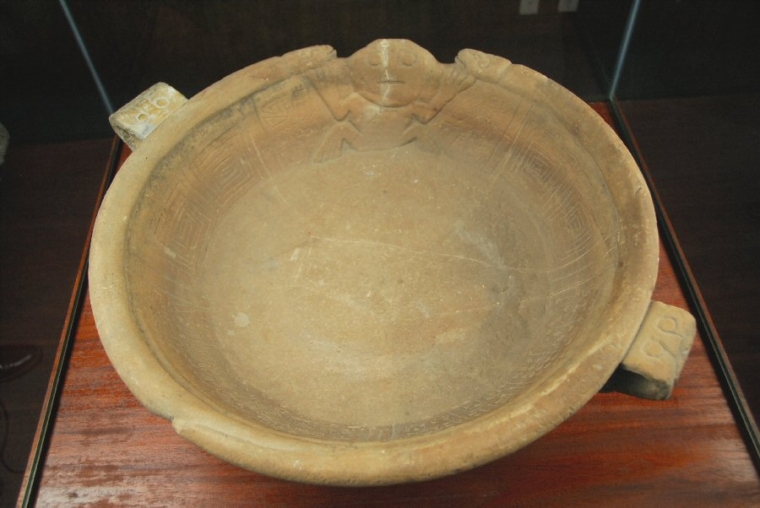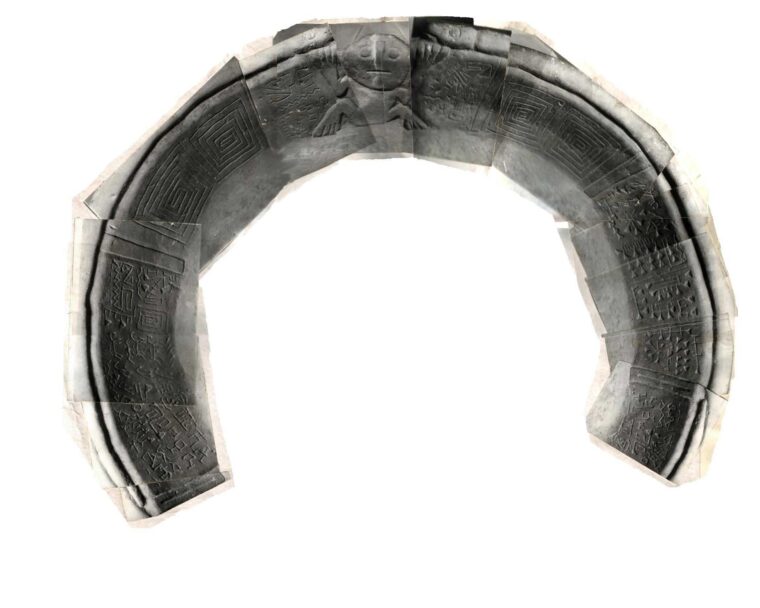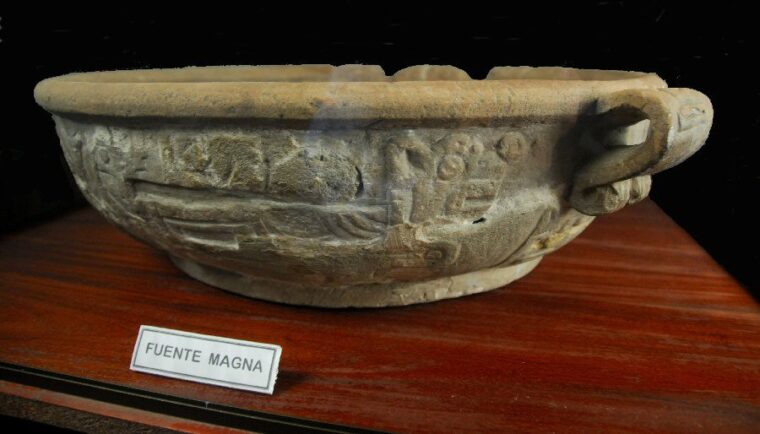The Fuente Magna is a highly significant and debated archaeological find from South America, often referred to as the "Rosetta Stone of the Americas." It is a large stone bowl believed to have been used for ceremonial or ritualistic purposes, like purification, baptism, or offering libations.
The Fuente Magna was discovered accidentally by a farmer on a private estate, the Chua Hacienda, owned by the Manjon family, located approximately 50 miles from La Paz, Bolivia, near Lake Titicaca in 1960.
The Fuenta Magna was found in an untouched area, but thermoluminescence dating confirms its ancient origins.
The bowl is brown in color and intricately carved with figures and designs of animals or people. The inside of the bowl is adorned with carvings that resemble ancient Sumerian cuneiform writing, but the language represented is uncertain.
Other parts of the bowl feature inscriptions written in the ancient quellca language, which is believed by many experts to have originated from the Andean Pukara civilization, a precursor to the well-known Tiwanaku empire.
In 1960, Bolivian archaeologist Max Portugal Zamora learned of the bowl's existence from his friend, Pastor Manjon. Zamora set out to decipher the mysterious inscriptions on the bowl after conducting minimal restoration work on it, using various texts and resources on ancient Andean writing.
Sadly, his efforts were largely unsuccessful, and in that same year, the bowl was given to the La Paz City Hall in exchange for a land grant to the Manjon family.
After that, the Fuente Magna was kept at the city's "Museo de Metales Preciosos" (Museum of Precious Metals) for around 40 years, before renewed interest in the artifact led to renewed archaeological examination.
In 2000, Bolivian archaeologists Freddy Arce and Bernardo Biados decided to visit the location where the Fuente Magna was discovered. They traveled to Chua to talk to local people and look for any information about the strange bowl's origins.

At first, they had trouble finding information, hitting many roadblocks. No one seemed to know anything about the Fuente Magna or the Manjon family. However, their luck changed when they met a 98-year-old local farmer named Maximiliano.
Maximiliano recognized the Fuente Magna from a photograph and referred to it as "el plato del chanco" (Spanish for "the plate of the hog" or the "hog's dish"). It turned out that Maximiliano had been using the Fuente Magna, one of the most significant archaeological discoveries of the 20th century, as a pig-feeding dish!
Maximiliano then told Arce and Biados that he did not think much of the bowl until a man came and took it away (likely after paying a sum of money) and then gave it to the local La Paz city officials.

Arce and Biados extensively photographed and researched the artifact, determining that it was probably used in ancient times for rituals or ceremonies. They then shared their findings with a renowned American epigraphist named Clyde Ahmed Winters.
After a thorough examination of the images, Winters determined that the mysterious writings on the Fuente Magna were written in a proto-Sumerian language. Winters' translation of the cuneiform letters on the bowl's central panel reads as follows:
"In the future, approach the Immense Nia, a person blessed with great protection. The Divine One (Nia) will instill purity, joy (or tranquility), and character. This beneficial oracle is for individuals who wish to create a strong character, happiness (or tranquility), and purity for everyone who seeks it".
"At the temple, use this talisman (the Fuente Magna bowl) to divine or bring out knowledge, peace, and one-of-a-kind advise." Anoint this virtuous shrine; the leader will swear an oath to follow the correct road in order to establish purity and character. Oh [priest or cult leader], seek for (or make available) a distinctive light for everyone who wishes to live a good life."
Nia (also known as Ni-ash or Nammu) is the Sumerian goddess who, according to ancient Sumerian stories, gave birth to the sky and the earth. The frog depicted on the inside of the bowl - which serves as the bowl's central figure - is widely recognized by scholars as symbolizing fertility, and is a representation of the Sumerian goddess Nia.

The exterior of the bowl depicts two zoomorphic figures commonly found in ancient Tiwanaku symbology - the frog and the snake. The question then arises, how did a bowl with proto-Sumerian inscriptions end up in a location near Lake Titicaca, which is 12,500 feet above sea level and hundreds of kilometers away from the Sumerian homeland?

According to studies, the Sumerians were seafaring people who navigated the Parana River to reach the ancient Peabiru Road, from which they were able to access the Andes region around 3000 BC. They interacted and traded with the Pukara people there, exchanging items such as copper, gold, textiles, and ceramics.
The history of many ancient civilizations is still not fully known and the exact way in which these various cultures may have interacted and influenced each other is still a topic of much debate.
Although rare, discoveries like the Fuente Magna can greatly enhance our understanding of how to piece together the many complex and diverse aspects of early human history.



